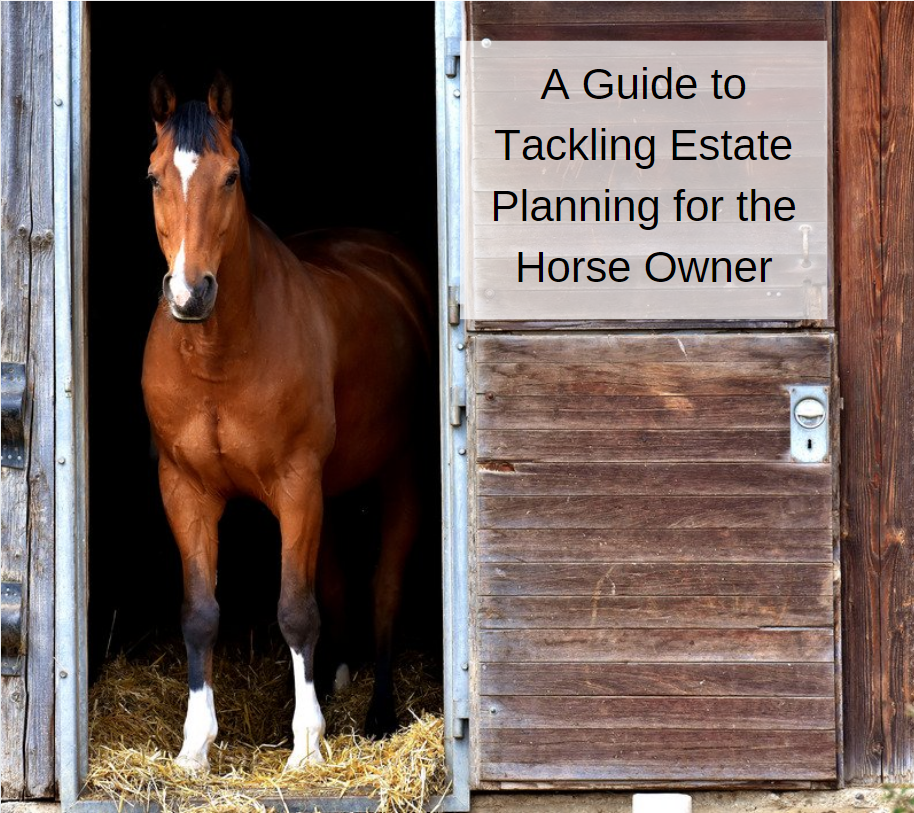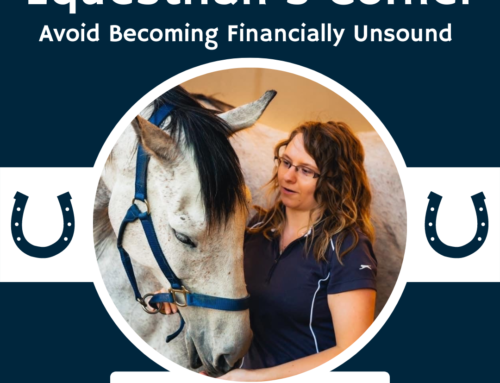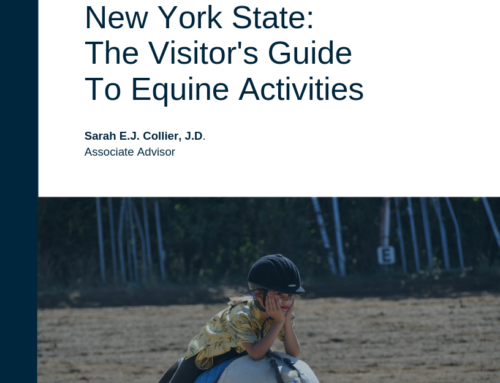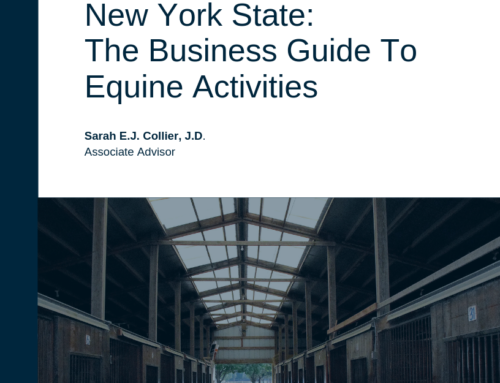By Sarah E. J. Collier, JD
As seen in the New York State Horse Council’s 2019 fourth quarter newsletter.
It is not a hidden secret that horses are very expensive to own. A recent expense report I completed totaled the annual expenses for a ten-year-old horse, stabled at a boarding facility, at approximately $6,500 per year. Assuming the horse lives until age 40, the horse will cost at least $195,000 over the next 30 years. These expenses are something that we, as horse owners, are willing to accept for the companionship of our loving horses, but what happens in the event you become incapacitated or pass away while owning your horse? Who is willing to take on the responsibility, both the time and financial commitments, of owning your horse?
This is a difficult decision, which can be overwhelming. This article will break down the thought process into steps to hopefully make this overwhelming task more manageable and ready to implement.
Step 1: What are my horse’s annual expenses?
Although a horse’s expenses are likely to increase over time, this gives potential caregivers an idea of the financial responsibility before they accept the role. Examples of annual expenses include: insurance, vet care, hoof care, hay and feed, supplements, and stabling costs.
Step 2: Who will care for your horse?
a. Identify any family members or friends who would be a good fit for caring for your horse.
Ideally, find someone who is familiar with your horse and is willing to continue to care for your horse just as you did. If you have multiple horses, you may want to think of multiple individuals depending on the horses’ needs and the resources of possible caregivers.
b. Donate the horse for educational purposes or farm sanctuaries.
Unfortunately, there may be circumstances where you do not know anyone that is able to care for the horse. In this situation, donating your horse to a 4-H program, college equestrian team or other similar organization may be a good fit to ensure your horse is properly cared for. As a last resort, farm sanctuaries may agree to care for your horse especially if accompanied with a donation to cover future expenses.
c. Sell your horse through your Estate.
Aside from debt collection, there are two common examples why the horse may be sold. One example is by a specific request in your Will/Trust that the horse is sold. The second example is the beneficiaries/caregiver of the horse disclaim the gift (i.e. reject owning the horse), thereby requiring the Executor or Trustee to sell the horse if no other option is available. In either circumstance, instructions on selling your horse should be provided to the Executor/Trustee to avoid unintended consequences, such as the horse going to an unsuitable owner or a kill pen. These instructions could include a request that the Executor/Trustee hire a reputable broker as well as a few suggestions of names that you deem acceptable.
In addition, separate from your Will, keep a running portfolio of your horse’s characteristics and skills including riding disciplines, achievements, registration and pedigree, vices, food and medical needs etc.. Once complete, keep the information in a safe place that is easily accessible to your Executor/Trustee in the event they need to market your horse.
Step 3: Determine whether you wish to fund the care of your horse.
If someone has accepted the role of caregiver, depending on the circumstances, you may want to make a monetary gift to cover your horse’s expenses. This can be either an outright lump sum or series of payments gifted to the caregiver, or assets placed in a Trust for the Trustee to manage.
Tools that could be used are: Last Will & Testament, Trusts, insurance products, Transfer on Death Account/Payable on Death Account, etc. At this point, you may want to speak to your financial advisor to look at which tools may be best financially for you to accomplish your goals.
Step 4: Prepare for when you are unable to make decisions for yourself (incapacitation).
When you speak with your attorney, they are likely to ask you to name an Agent in your (Durable) Power of Attorney if you have not done so already. Along with other powers that your Agent may have, they can be given the authority to manage your finances, including the care of your horse. If the Agent is given this authority, the Agent should have direction on caring for and rehoming your horse if needed. These are likely to be similar instructions you give to your Executor/Trustee.
Step 5: Discuss your intentions with your family, chosen caregiver and agents.
Communication with family members and friends about your plan is vital to avoid surprises that may increase tension following your incapacitation or death. For example, some decisions left to those you name to act on your behalf may be emotionally difficult to make in your absence such as rehoming or euthanizing your horse. By informing them ahead of time about your wishes, it may lessen their stress and increase the likelihood they follow through with your plan.
Step 6: Speak to an attorney!
Depending on the size and type of assets in your total estate, your attorney may recommend different estate planning tools such as a Last Will & Testament and/or Trusts (revocable, irrevocable, living, testamentary, etc.) to execute your plan. If you have a financial advisor, you should also have them look over your estate plan prior to execution to ensure it coincides with your tax and legacy objectives, as well as any other financial plans already in place.
Step 7: Implement and update.
Implementing your estate plan goes beyond executing the legal documents. For example, it could require working with your financial advisor to open accounts and fund them accordingly. In addition, you should review your estate plan, at the minimum, after one of the four D’s (Death, Divorce, Disability, and Debt). As it pertains to horse owners, you should also review your estate plan whenever your horse’s expenses change. Unfortunately, implementing and updating the estate plan seems to be the most forgotten step and forgetting to do so can have adverse effects on your estate plan.
Creating a thorough Estate Plan takes careful planning to achieve your key objectives and limit unintended consequences. Depending on your unique situation, your financial advisor and attorney may advise certain financial or legal tools to implement your Estate Plan. Therefore, it is important to work closely with these professionals to ensure that your financial goals coincide with your estate plan objectives.







